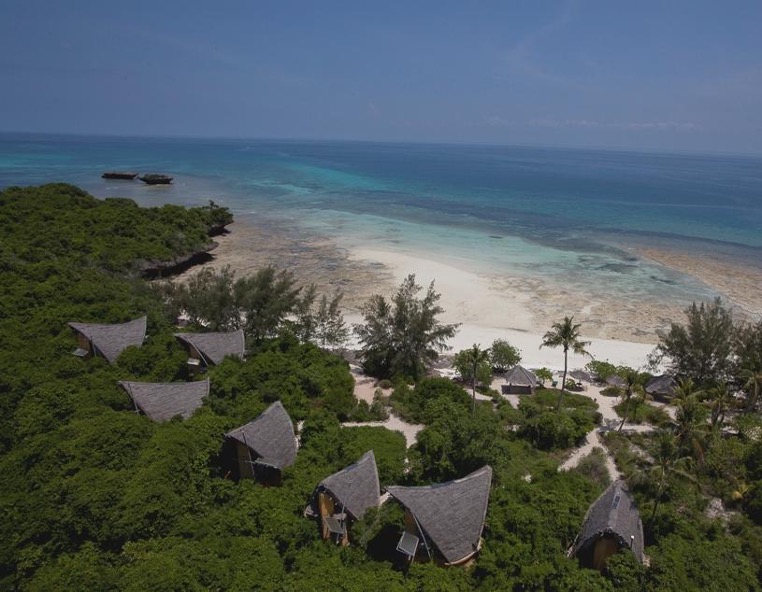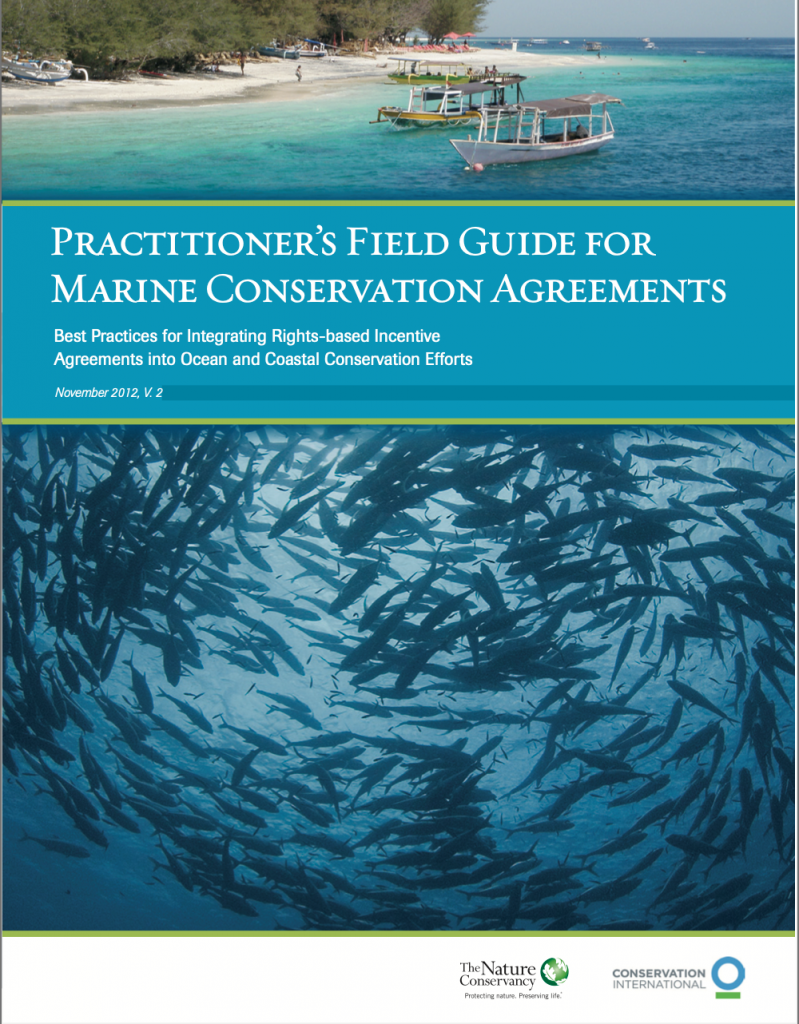Marine Conservation Agreements
Introduction to Marine Conservation Agreements
Over the past several years, non-governmental organizations (NGOs) have realized that the creation of formal protected areas may not be sufficient to protect ocean and coastal biodiversity, particularly in areas where rights have already been granted to specific owners and users. To address this, NGOs are increasingly integrating Marine Conservation Agreements (MCAs) into ocean and coastal protection efforts to provide greater surety of long-term success.

The eco-lodge on Chumbe Island. Revenue from eco-tourism activities is channelled back into conservation, education, and research. Photo © Chumbe Island Coral Park
MCAs are defined as:
Any formal or informal contractual arrangement that aims to achieve ocean or coastal conservation goals in which one or more parties (usually right-holders) voluntarily commit to taking certain actions, refraining from certain actions, or transferring certain rights and responsibilities in exchange for one or more other parties (usually conservation-oriented entities) voluntarily committing to deliver explicit (direct or indirect) economic incentives.
The above MCA definition has seven distinct elements, which include:
- agreement mechanisms (any formal or informal contractual arrangement) that aims to achieve
- conservation goals (ocean or coastal conservation goals) in which
- right-holders (one or more parties) establish
- conservation agreements (voluntarily commit to taking certain actions, refraining from certain actions, and/or transferring certain rights and responsibilities)
- in exchange for
- conservation-oriented entities (one or more other parties) voluntarily committing to deliver
- economic incentives (explicit incentives, whether direct or indirect).
The summary table below identifies the major elements and variables of MCAs. MCAs can be entered into by governments, communities, private entities, and private individuals. They are based on agreed upon terms and conditions, are often bottom-up approaches, and include quid-pro-quo incentives wherein all parties receive benefits.
| 1. AGREEMENT MECHANISMS* • Purchase & Sale Agreements • Leases • Licenses • Permits • Concessions • Easements • Contracts Informal: • Handshakes • Letters • Memorandums of Understanding • Memorandums of Agreement • Cooperative Agreements • Co-management Agreements • Verbal Understandings |
| 2. CONSERVATION GOALS** • Restore and protect reefs • Recover and manage fisheries sustainably • Protect shoreline • Conserve biodiversity • Preserve cultural sites • Promote sustainable tourism |
| 3. RIGHT-HOLDERS*** Owners, Managers, or Users: • Government agencies • Private individuals and families • Organized community or user groups • Businesses |
| 4. CONSERVATION COMMITMENTS **** Take actions: • Patrol areas • Restore habitat • Develop management plan Refrain from actions: • Stop fishing • Stop using destructive gear • Stop turtle harvesting Transfer rights/ responsibilities: • Management rights • Tourism rights • Fishing rights |
| 5. AN EXCHANGE |
| 6. CONSERVATION ENTITIES *** • NGOs • Businesses • Governments • Community groups |
| 7. ECONOMIC INCENTIVES **** • Cash • Grants • Employment • Social Services • Infrastructure • Training • Supplies • Equipment |
| * Can be a defined term or undefined term; can be long-term (over 10 years) or short-term (less than 10 years). ** Constitute the desired project outcomes. *** Make up the parties to the agreement. **** Make up the assured project benefits for both parties. |
Common examples of MCAs include leases, licenses, easements, management agreements, purchase and sale agreements, concessions, and contracts. NGOs have used MCAs to help manage specific areas, harvesting methods, and access to resources. These efforts have protected important marine biodiversity while positioning NGOs as vested and solution-oriented stakeholders with governments and communities responsible for decision-making.
Relationship between MCAs and MPAs
Marine Conservation Agreements and Marine Protected Areas (MPAs) are different, but can often lead to the similar things. Formal MPAs are often established by government entities through law or policy. Conversely, MCAs are established between different entities, usually a resource owner or user and an NGO. Both MPAs and MCAs, however, can be used to protect specific sites and resources. MCAs can also be used to complement and augment the number and effectiveness of formal MPAs when the establishment of additional MPAs is not possible. Under some circumstances, MCAs can be used as catalysts for the formal establishment of MPAs or can provide a mechanism for local stakeholder involvement in collaborative management of MPAs.
MCA Field Projects
There are numerous existing MCA projects throughout the globe. One of the best known MCA projects is the Chumbe Island Coral Park in Tanzania. Another example is the Indonesia Marine Conservation Agreement, which illustrates how several for-profit companies can work with a local NGO and local fishermen to reach agreements that protect coral reefs, fishing grounds, and fishermen livelihoods, thereby benefiting all parties.
Prior to launching an MCA project, practitioners should have a firm understanding of the ways in which the major MCA elements can be mixed and matched to meet project-specific circumstances. Click here to learn more about developing marine conservation agreements.
Practitioner’s Field Guide for Marine Conservation Agreements
The Practitioner’s Field Guide for Marine Conservation Agreement was developed through a collaboration between The Nature Conservancy and Conservation International. It is intended to take practitioners through a step-by-step process to investigate, negotiate, design, and implement MCAs.
The major phases of the MCA Field Guide include:
- Phase 1: Feasibility Analysis
- Phase 2: Engagement
- Phase 3: Contract Design
- Phase 4: Implementation
The Field Guide can be used as a stand-alone document, or to complement other processes.
